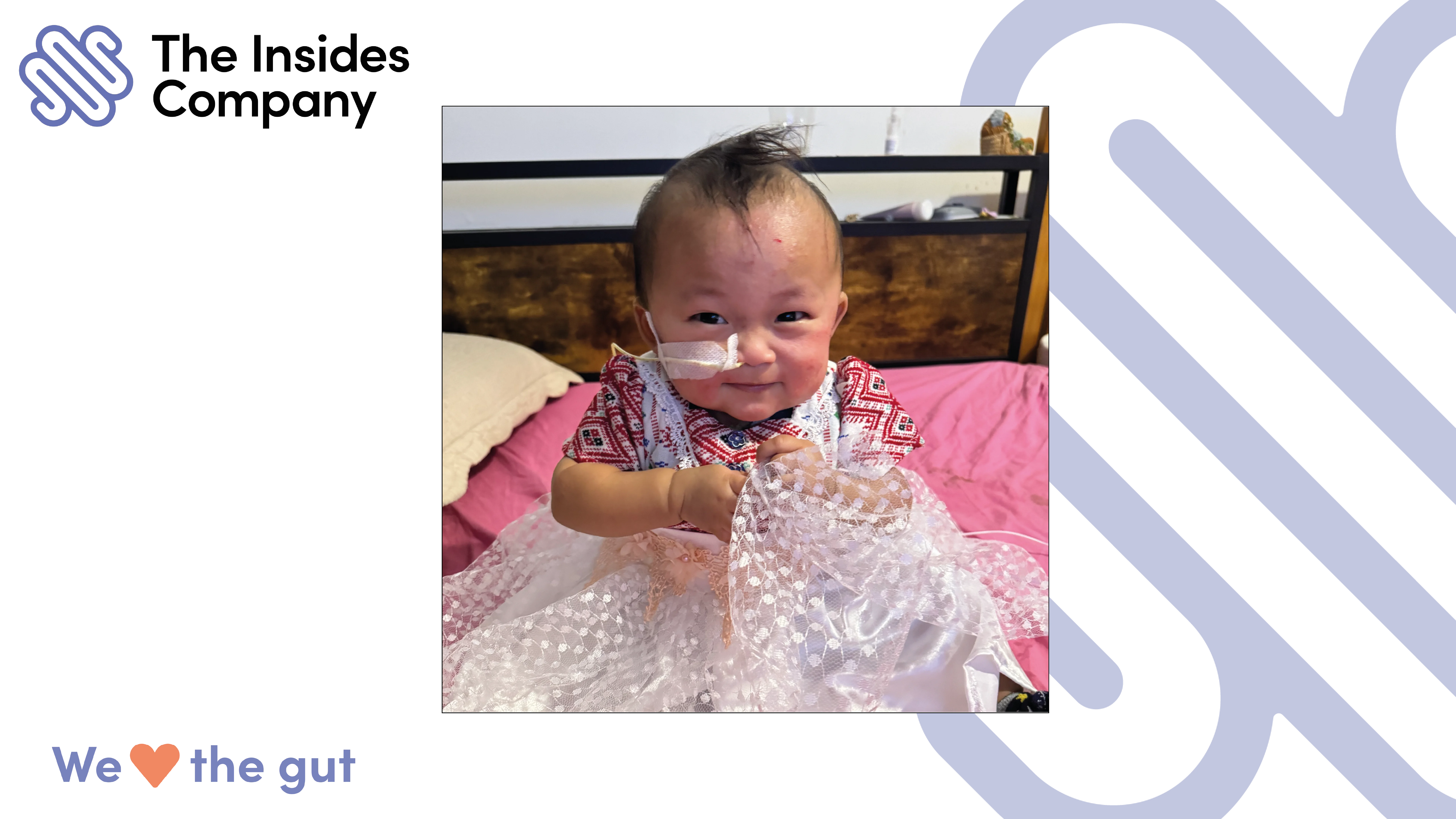
Sandra is a 70-year-old female who presented to hospital with a three-day history of cramping, abdominal pain, reduced appetite, and minimal lower gastrointestinal (GI) activity. She has a history of smoking and cardiac disease, but no other GI history. A computed tomography angiogram (CT-A) showed transient postprandial gut ischemia secondary to a superior mesenteric arterial occlusion.
Sandra quickly deteriorated and was found to have ischemic small bowel loops, extensive intrahepatic portal vein gas, and a small acute splenic infarct. Over nine days, Sandra had three laparotomies resulting in the resection of an ischemic 60 cm section of jejunum, approximately 20 cm distal to her duodenal-jejunal flexure, and formation of a double-barrel jejunostomy.
Sandra’s postoperative recovery was tenuous, but she stepped down from intensive care ten days after her last laparotomy. She began manual chyme refeeding, which is a form of nutritional therapy to help patients to maintain sufficient hydration and caloric intake. Sandra was also on parenteral nutrition (PN) during this time. Once Sandra had stepped down from the ICU, her regional hospital approached The Insides® Company to help Sandra transition to manage her chyme reinfusion therapy independently.
Sandra was able to use The Insides® System, which provided her with autonomy over her care and reduced the intensive nursing hours required to maintain her health. The Insides® System allowed Sandra to refeed her intestinal output, which has been shown to reduce, if not completely negate, the need for PN. Sandra’s jejunostomy had an average output of 4 litres per day. Losing nutrients at the beginning of her small bowel was unsustainable and required intensive PN therapy.
Before using The Insides® System, Sandra’s nursing team had to refeed her chyme manually. This process involved collecting, straining, and refeeding her intestinal contents via a generic gastrostomy tube every two to four hours. By contrast, Sandra was able to use The Insides® System, without encountering bodily fluids, which improved the process and reduced the need for intensive nursing.
Sandra had been manually refeeding chyme with the help of nursing staff for two weeks when The Insides® System was implemented. At this stage, Sandra was familiar with the process of refeeding chyme, which made the transition to the device relatively easy. Sandra increased her confidence and autonomous use of The Insides® System over the first three weeks. Her output reduced from 4 litres per day to 1.5 litres per day after four more weeks of using The Insides® System. The reduction in her output meant that Sandra was able to wean off PN after only eight weeks of chyme refeeding. During this time, Sandra gained enough weight to be discharged from her regional hospital to a community hospital to complete her rehabilitation, aided by her continued use of The Insides® System.
Sandra completed eight weeks of rehabilitation and was brought back to her regional hospital for reversal surgery. The reversal of Sandra’s double-barrel jejunostomy was uncomplicated, and she was successfully discharged home 11 days postoperatively. Two weeks after surgery, Sandra is managing well at home, with minimal frequency. Sandra now averages one to two bowel movements per day with continence.
Individual results may vary. Testimonials do not claim to represent typical results. All testimonials are received from real patients via text, in person, or through video submission, and may not reflect the typical patient experience. Testimonials are not intended to represent or guarantee that anyone will achieve the same or similar clinical results. Each patient’s condition is unique to their physiology and health status. Thus, the testimonials shared by The Insides Company may not reflect the typical patient experience.

This case study follows Jaybie, a preterm infant born with gastroschisis who required multiple abdominal surgeries and experienced a complex postoperative course. She developed intestinal failure, became dependent on intravenous nutrition, and faced a long and challenging path to discharge...

This case study follows Isabella, a complex premature infant whose Neonatal Intensive Care stay was further complicated by a spontaneous perforation, requiring a laparotomy and bowel resection resulting in faltering growth...